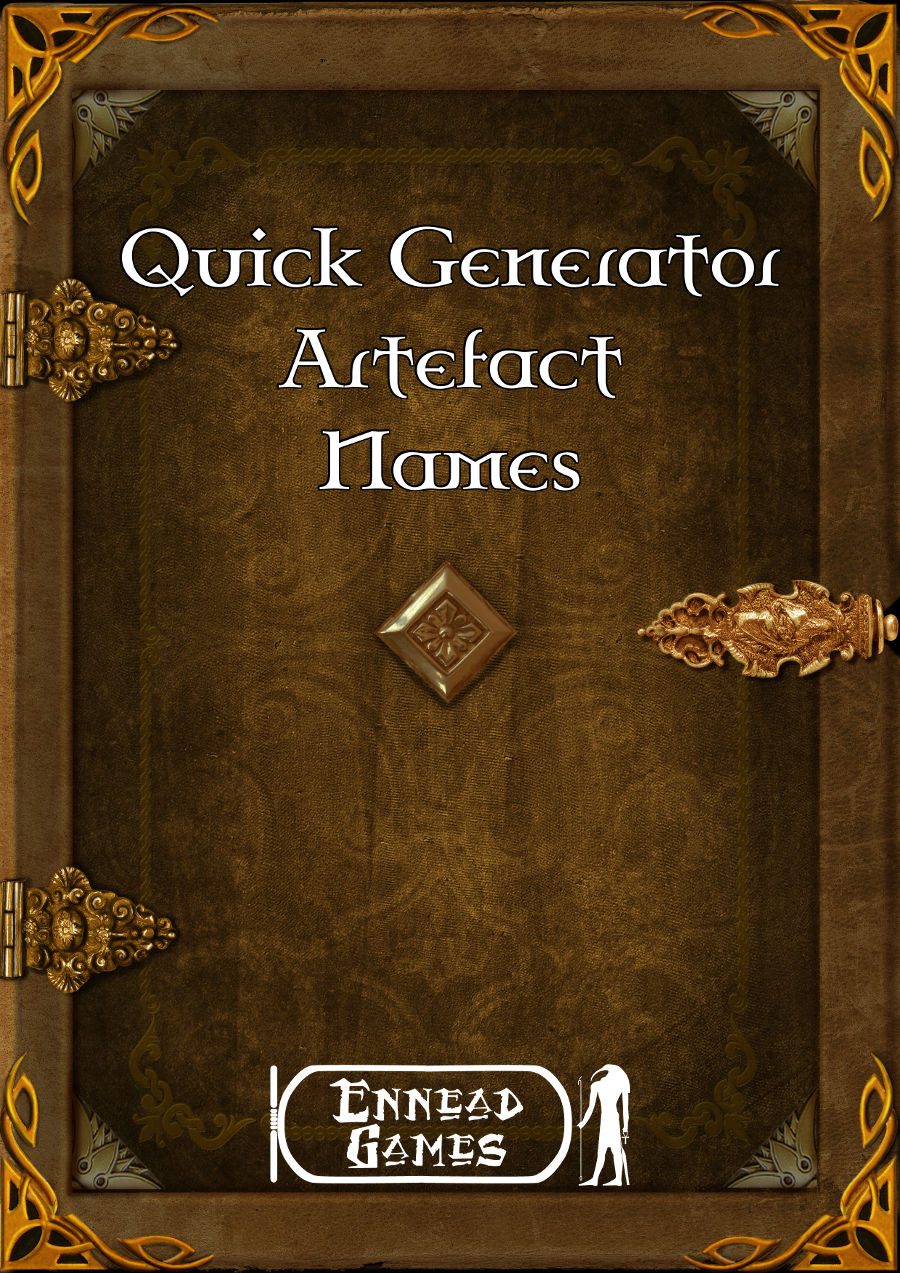Today is the start of a hopefully regular feature where I have guest bloggers come in and post whatever they want that is rpg related. It can be stories, tips, general musings, even reviews. If you want to to be part of this, then get in touch.
Chris
Brainstorming Locations with Players
Phil Nicholls blogs at Tales of a GM, where he writes about narrative gaming, faster prep and more story. He is currently running a HeroQuest Glorantha campaign in a home-brew setting. Phil has written for Johnn Four’s Roleplaying Tips newsletter and has a selection of self-published pdfs.
This essay is taken from the archives at Tales of a GM.
http://talesofagm.com/
One of my core GM principles is that If you want something to be relevant at the table, then the mechanics must ensure it impacts the game. The features of the game environment fall into this category.
Events within the game do not take place in an empty white box. Each and every environment has features that effect the game, from a busy coffee shop to a dank dungeon corridor. It is all very well for the GM to narrate these setting details, but if they are not made mechanically relevant to the game, then the Players are likely to overlook them.
I have adopted Location Aspects into my game, based upon the ideas in Fate Core.
Fate Core Location Aspects
A central part of Fate are the Aspects, which are used to define everything and anything in the game. Fate Core defines several types of Aspect, one of which are Situational Aspects. A subset of these Situational Aspects apply specifically to a location. These are also known as Location Aspects.
Thus, a Location Aspect can describe any facet of a location. In a game, the most important Aspects for a location are the ones that are relevant during play. Literally anything could be a turned into an Aspect, but it is a waste to create an Aspect that is not going to have an impact on the game.
The Fate Core rules outline several categories of Situational Aspect relevant to a location:
- Physical features of the environment, such as Stone Pillars or Sloping Ground
- Immediate obstacles, like Spiked Pit or Raging Wildfire
- Contextual details that will be relevant to play, including Eye of Scrying or Rolling Clouds of Smoke
I add a fourth category for my game: the inhabitants. This can represent general inhabitants of an area, who may or may not be the primary threat to the Heroes.
Brainstorming Aspects
I run a prep-lite game, featuring improvisation at the table. When it comes to Location Aspects, I involve the Players in the process. Brainstorming Location Aspects with your Players carries with it several advantages:
- Less Prep
From the GM’s point of view, the big advantage of this technique is that I do not have to prep the locations myself. As this process occurs at the table, I do not need to prepare it in advance, slimming down my prep routine. - More story variation
Brainstorming with the Players increases the variety of my setting. Now there are multiple imaginations at work, often building upon each other. We all return to the same ideas during setting creation, especially if we are under pressure to complete it. Opening up the process to all the Players creates a broader range of features for the location. - Increased Player satisfaction
The beauty of having the Players involved with setting creation is that it gives them a chance to mould the setting towards the traits they enjoy. The brainstorming allows each Player to add those features they like, or their Hero could utilize. Thus, the Player of a sneaky rogue can ensure there are shadows or locked chests in a location. During the subsequent gameplay, the rogue can then show off her skills using these features. - Increased Player engagement
Finally, involving the Players in creating a location engages the Players with the location. As the Players took a hand in its generation, they are emotionally engaged with the setting. The collaborative process shows how you value their input and the Players now have a personal stake in your setting.
Generating Aspects
The process of generating Location Aspects at the table is very simple. I pause the narrative of the game and have all the Players roll for initiative. Play then proceeds clockwise around the table, starting with the best roll. I include the GM here on an equal footing, as I want to be part of generating features of the setting.
Three Location Aspects are enough to provide a reasonable level of detail, without overburdening a location with too much clutter. Thus, the first three Players in the sequence each have the chance to nominate an Aspect.
There is usually some discussion at this point. Most Players can easily think of something present in the location. At other times, an idea starts with one Player, then is expanded upon by another as the group reaches a consensus about the notable features of an area.
As the GM, I like to keep suggestions within the realms of what is possible in the setting. Nor do I allow anything that unfairly penalizes another Hero or has a huge plot impact. It is best to work with the Players as much as possible, and only intervene to curb any excesses. Take what the Players give you, and make it fit the game in an acceptable way.
Aspects at the Table
Once an imaginative Location Aspect has been decided, it must be made relevant to the game. First, generate a Rating for the Location Aspect. Typically, this Rating is at Moderate, scaled to the current power level of the Heroes. However, it is possible to assign a weaker or stronger Rating.
This Rating is used as the default Resistance for actions relating to the Location Aspect. Thus, if the earlier Stone Pillars had been given a Moderate Rating, then any Hero trying to climb the pillars would have to overcome a Moderate Resistance.
Nesting Aspects
The focus of a Location Aspect can be as broad or narrow as you desire. Country, region, town, neighbourhood, house and room can all have Location Aspects. If an important scene is going to occur in a location, then generate Location Aspects for it. Likewise, if a previous Location Aspect could be relevant to the new location, then there is no reason why it could not be invoked. If it makes sense in the narrative, then the Location Aspect should be accepted at the table.
The only limitations on nesting Location Aspects are the engagement of your Players and the amount of time that you have available.
Example, Rainbow Valley
The first time I ran this process was for a desolate valley. Here are the Aspects we created:
- Rolling Steppe
- My initial Location Aspect was deliberately chosen to be a fairly generic one. I wanted to set the general terrain type, yet not cite anything too specific so as not to restrict the Players’ imaginations. It also served as an example of the process in action.
- Rocky Pillars
- This was the first of the Player choices. Subsequently that Player had his character climb one of these pillars.
- Thick Rainbow Dust
- The last Player created this imaginative feature. This lead me to name the location Rainbow Valley. The Player’s intention was to make use of the dust with one of his followers, a dust worm. Sadly, the subsequent story did not present an opportunity for this to happen.
Conclusion
As the example of Rainbow Valley illustrates, allowing Players to brainstorm features for the setting adds greatly to the game. The Valley was not exactly how I had pictured it, but was better for the input of the Players. Likewise, by being involved with creating the details of the location, the Players were drawn deeper into the setting.
Location Aspects are a great way to pick out setting details that can become relevant to the game. Bringing the Players into the setting creation process will give you less prep and more story.
Happy Gaming
Phil
For more essays from Phil, and updates about his latest campaign, visit Tales of a GM.
http://talesofagm.com/



